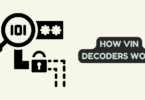
Employee
The most important meal of the day is breakfast. Or is it lunch? Dinner? No matter what meal you choose, having a company-wide gathering that includes food and conversation is a great way to foster team bonding, break down department barriers, and encourage employee collaboration.
Shared Meals and Employee Engagement: Understanding the Link
The power of shared meals in fostering employee engagement is a well-documented fact. It’s been shown that shared meals build trust and improve communication, foster a sense of belonging, strengthen teamwork, boost morale and employee satisfaction, and they’re also a great way to celebrate success.
Here are some examples of successful mealtime gatherings:
A weekly lunch at an upscale restaurant where employees share their accomplishments or challenges over appetizers or entrees
An annual holiday party featuring traditional foods from each employee’s home country
Even something like a celebration can help in mealtime gatherings. According to CaterCow, there’s one thing that every company celebration needs, and that’s food. You can connect with a catering service provider to have special celebration food arrive at your workplace and enjoy it with all your colleagues and employees.
When people sit together to enjoy a meal, they get time to bond with each other, which can improve engagement. This engagement is crucial for business success. However, only a few companies can achieve it. In a survey conducted in 2020, only 40% of employees were engaged. This can increase if your company works on various arenas like meal sharing.
How Shared Meals Help With Employee Engagement
Shared meals play a vital role in employee engagement, and here are a few ways they can help.
Creating a Sense of Belonging and Camaraderie
Shared meals help build a sense of belonging and camaraderie among employees, creating a sense of community. When people start talking to each other at meal tables and cafeterias, they feel like they are a part of the company.
This increased sense of belonging can also help in other areas. For instance, one of the leading surveys revealed that a sense of belonging increased employee retention by 43% in 2023. This shows how group lunches can be helpful in various employee management aspects.
Having a lunch meal once or twice a week is not challenging. There are several online websites where you can order lunch for your team, and the food will arrive at the scheduled time. In fact, placing a team lunch group order is pretty straightforward on such websites. All you need to do is find a menu, let the employees choose what they want, and deliver the order.
Strengthening Team Collaboration and Cooperation
The workplace is a place where many people spend their days. And while it can be challenging to get along with others in such an intimate setting, employees must collaborate and cooperate. Teamwork is essential for success at work, both personally and professionally. From various digital transformations to product research, collaboration is required among teams and multiple branches of an enterprise.
It’s no secret that mealtime gatherings are an excellent way to strengthen team collaboration and cooperation, and they don’t have to be elaborate. A simple lunch date with your coworkers can go a long way toward building trust between you, strengthening relationships with those around you, improving communication skills, etc.
Boosting Morale and Employee Satisfaction
When you think about it, mealtime gatherings are a great way to boost morale and employee satisfaction. They’re also a chance for your team members to get to know each other better, which can affect their productivity and overall happiness.
Here are some ways in which shared meals can boost employee morale:
Promotes Social Connections: Shared meals allow colleagues to interact in a relaxed and informal setting. It will enable employees to get to know each other better, build personal relationships, and strengthen bonds. When employees feel connected to their coworkers, it creates a positive work environment and fosters a sense of camaraderie.
Breaks Down Hierarchies: Sharing a meal can help break down hierarchical barriers within the organization. When employees and managers come together to eat, it creates a more egalitarian atmosphere where everyone is on an equal footing. This can lead to increased communication, collaboration, and trust between team members.
Boosts Well-Being: Enjoying a meal together can uplift spirits and create a sense of happiness and well-being among employees. It provides a break from work stress and allows individuals to recharge and rejuvenate. Employees feeling happier and more satisfied positively impacts their overall morale and productivity.
Implementing Mealtime Gatherings in the Workplace
While mealtime gatherings can offer numerous benefits, they can be hard to implement in the workplace. Here are some tips to simplify the process.
Designate a space for mealtime gatherings.
Make sure it is a comfortable space, with chairs or benches at the right height for everyone on your team. The table should be large enough to accommodate all employees so that if you have more than one table, they are not crowded next to each other or too far apart from each other.
Make sure it’s clean. You don’t want any germs getting passed around during these meals, so make sure there are no crumbs on the floor or stains on tables and chairs.
Design a Conducive Dining Space to Implement Mealtime Gatherings
As you design your dining space, consider these best practices:
Create a comfortable, relaxed, and inviting environment. Your employees are likelier to feel welcome in an environment that feels familiar to them. If you have the resources to accommodate multiple seating options, do so. You may also want to offer some non-food options, such as games or activities that can be done during breaks from eating. This will help keep things lively and prevent boredom from setting in too quickly.
Provide various food options with different price points so everyone can participate without feeling excluded based on their budget constraints, and don’t forget about beverages. Water bottles should be readily available throughout all areas where people congregate. Similarly, coffee service should be available whenever possible since studies show caffeine helps improve moods while reducing stress levels at work.
Facilitate Mealtime Interactions to Implement Mealtime Gatherings
Once you’ve decided to host an event, it’s time to get down to the nitty-gritty of putting together your program. Here are some tips on how to make sure that everyone has fun and gets something out of their experience:
Introduce yourself and ask others about their interests.
Ask people about their work, families, pets, etc.
Encourage participants in your group to ask questions about each other’s lives outside of work and inside it. This will help create stronger relationships between coworkers who may not yet know each other.
Overcoming Challenges and Maximizing Benefits
To ensure that your mealtime gatherings are a success, it’s essential to keep in mind the following:
Make sure that you have fun and engaging activities planned for your employees. Don’t just focus on work; you want to ensure everyone has opportunities to relax and enjoy themselves during the gathering. This can be done through games or activities like trivia or charades.
Ensure enough food is available at each table so no one goes hungry. It may also help if you have multiple options available so people can choose what they like best if they don’t like something else being served at their table. For example, you may want to order vegetarian, non-vegetarian, and even vegan food. Data shows that around 4% of the US population follows a vegan diet today. While the number is low, you don’t want to disappoint any employee who follows a vegan diet.
Conclusion
As you can see, mealtime gatherings are a simple way to boost employee engagement and drive company culture. They allow employees to connect through shared meals and conversations, which fosters a sense of belonging at work. In addition, these gatherings help build teamwork and cooperation among coworkers by fostering communication between them and management teams overseeing various departments within the organization.






